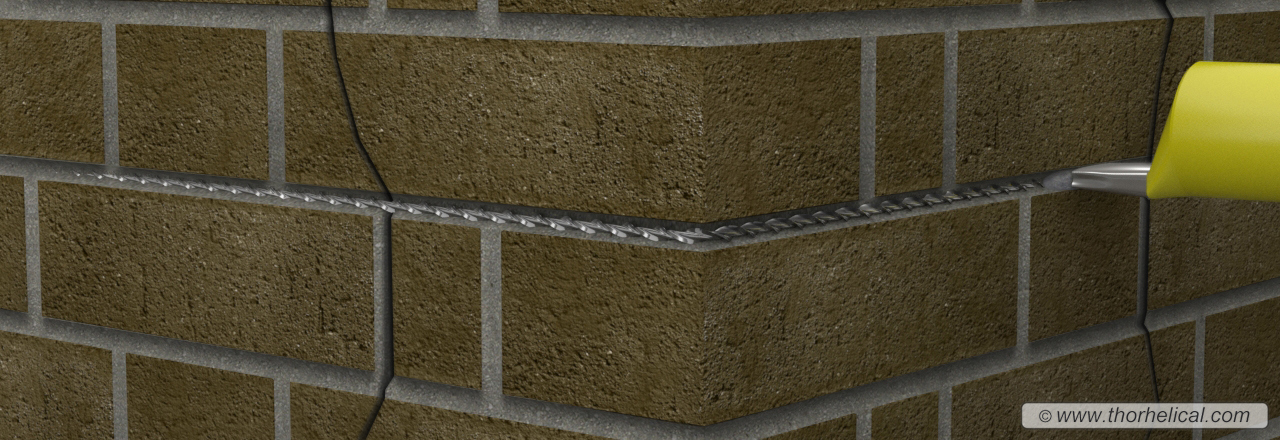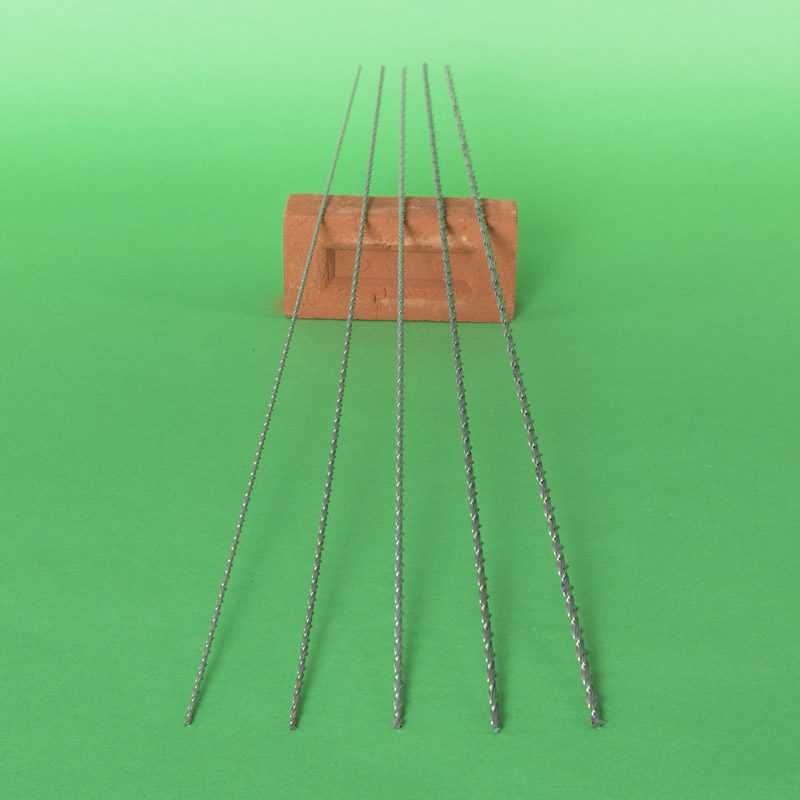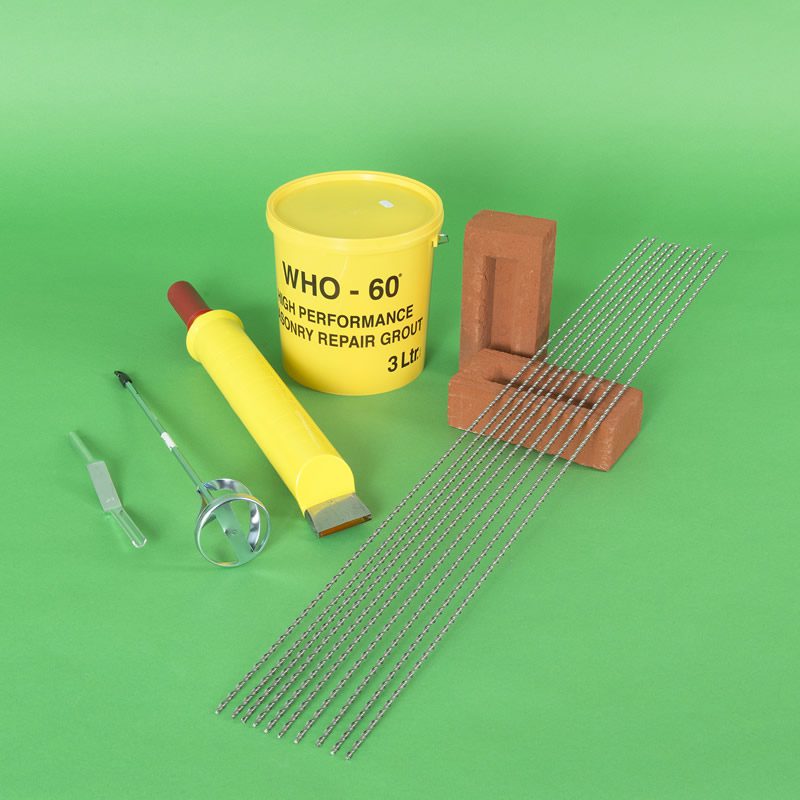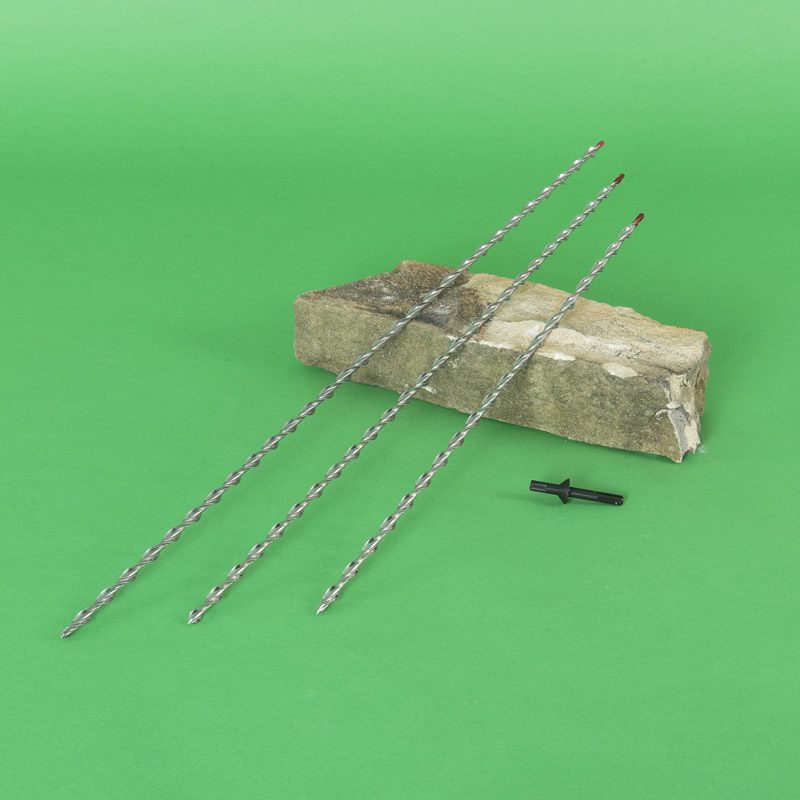
Thor Helical reinforcement bars can be pre-bent at ninety degrees to form concealed straps for stitching cracks at a corner of a building. Alternatively, installing heavy-duty drive pins can reinforce external corners by tying flanking walls at regular intervals.
Vertical cracks are common at the corners of masonry buildings. These fractures can occur for various reasons, including thermal/ moisture movement. Perpendicular walls may expand towards an external corner, causing rotation of the brickwork and eventual cracking in the masonry near the junction. Alternatively, fractures can occur because of differential movements in a wall, such as a bulging flank wall meeting a straight and stable corner.
Reinforcing external corners with crack stitching bars
A series of helical bars, bent at a right angle, are bonded into slots with WHO-60 polymer modified grout. The bars form layers of concealed reinforcement for stitching cracks at a corner of a building, wrapping around the corner to improve buttressing.
Stitching cracks at a corner of a building with long drive pins
A series of long drive-in helical wall ties are driven from the corner of a building into both flanking walls to form a succession of perpendicular tie straps. The 12mm diameter ties corkscrew into small 8mm pilot holes when driven with the impact action from an SDS hammer drill. The tie grips the brickwork along the entire length of the helix to provide a tension strap that reconnects and strengthens masonry adjacent to the cracked corner.
Independent testing shows both the cracking bars and heavy-duty drive pins conform to BS EN 846-4:2002 ‘Methods of Test for Ancillary Components for Masonry – Part 4: Determination of load capacity and load-deflection characteristics of straps’. BS EN 845-1:2013 National Annex NA states that the strap needs to provide equivalent performance to 30mm x 5mm tension straps and that the fitted straps should have a tensile load capacity of at least 8kN. Thor Helical bed-joint reinforcement bars or the heavy-duty drive pins exceed this performance criterion when reinforcing external corners of brickwork.



